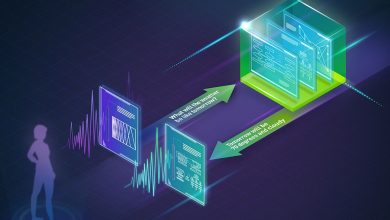Technology Trends 2025: Predictions and Perspectives from Akamai Technologies APJ

Attributed to Jay Jenkins, Chief Technology Officer, Akamai Technologies APJ
1. Distributed computing will be the go-to for greater efficiency, flexibility, and responsiveness
By 2025, distributed computing will emerge as the solution to our overstretched cloud infrastructure. As technologies like AI, spatial computing, and smart urban infrastructure demand more resources, organisations will shift from rigid centralised models to dynamic, distributed architectures. This transformation will empower platform engineering teams to strategically align processes with user locations, resource costs, compliance needs, and sustainability goals, unlocking unprecedented efficiency and adaptability. In the diverse markets of the APJ region, this flexibility will be vital for innovation and competitiveness, enabling companies to tailor solutions to local demands while minimising their carbon footprints.
2. Optimising AI workloads will be crucial in unlocking cost savings and performance gains
As businesses in the APJ region face soaring AI workload costs, 2025 will mark a critical turning point. Leaders will prioritise optimising the inference phase—where AI generates actionable insights—to streamline operations and boost speed and accuracy. This focus on optimisation will not only cut computational expenses but also enhance performance, allowing organisations to redirect resources toward growth and innovation. The result will be a powerful cycle where smarter AI translates into improved profitability and continuous advancement in AI capabilities.
3. AI agents will fundamentally change the way people interact with the web
When ChatGPT first exploded onto the scene back in late-2022, it drastically changed the technology landscape and setting us on a course to rethink the world wide web. Looking ahead to the next decade, I anticipate a future where AI agents will play an active role and assist in tasks like scheduling appointments, making purchases, and paying bills, allowing us to step away from our screens.
By 2025, we will start to witness the initial phases of this transformation. The chatbots we’ve become familiar with will develop into basic AI agents capable of performing simple tasks instead of merely guiding users through menus. For example, rather than just helping you navigate the process of booking an appointment with your healthcare provider, these agents could potentially handle it directly, offering you available time slots without any extra effort on your part. This shift will not only redefine convenience but also free us to focus on what truly matters, heralding a new era of effortless living powered by AI.
4. The rising popularity of small language models among enterprises
Small language models (SLMs) are poised to gain significant traction among enterprises by 2025. Their ability to deliver tailored insights while reducing dependence on high-end GPUs makes them an appealing option for businesses looking to efficiently leverage large language models to enhance their products and services.
In addition, the increasing focus on data privacy will drive enterprises to adopt SLMs that are more suitable for on-premises deployment, ensuring easier protection of sensitive information. The modular design and scalability of SLMs will further enable organisations to customise these models to meet their specific requirements, allowing for seamless adaptation to changing business needs. As a result, SLMs are set to transform how companies harness AI, making them not only more accessible but also more aligned with contemporary challenges in data management and privacy.




